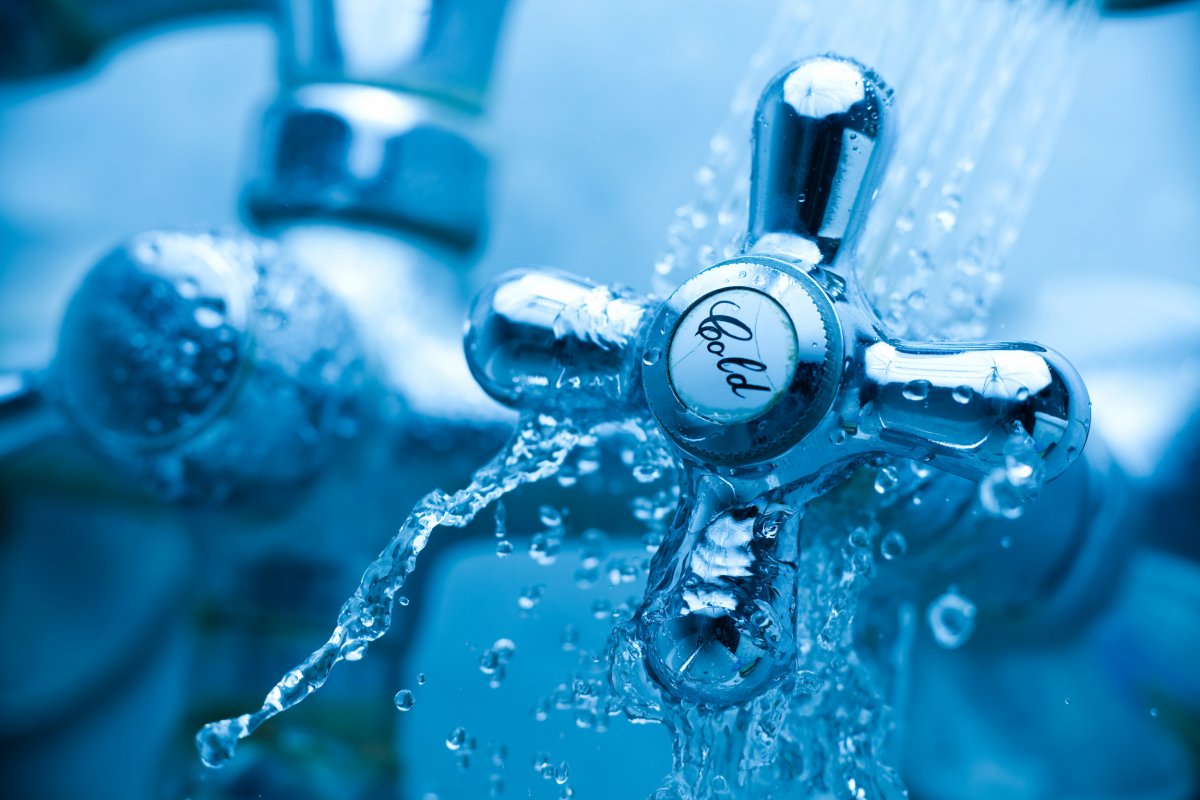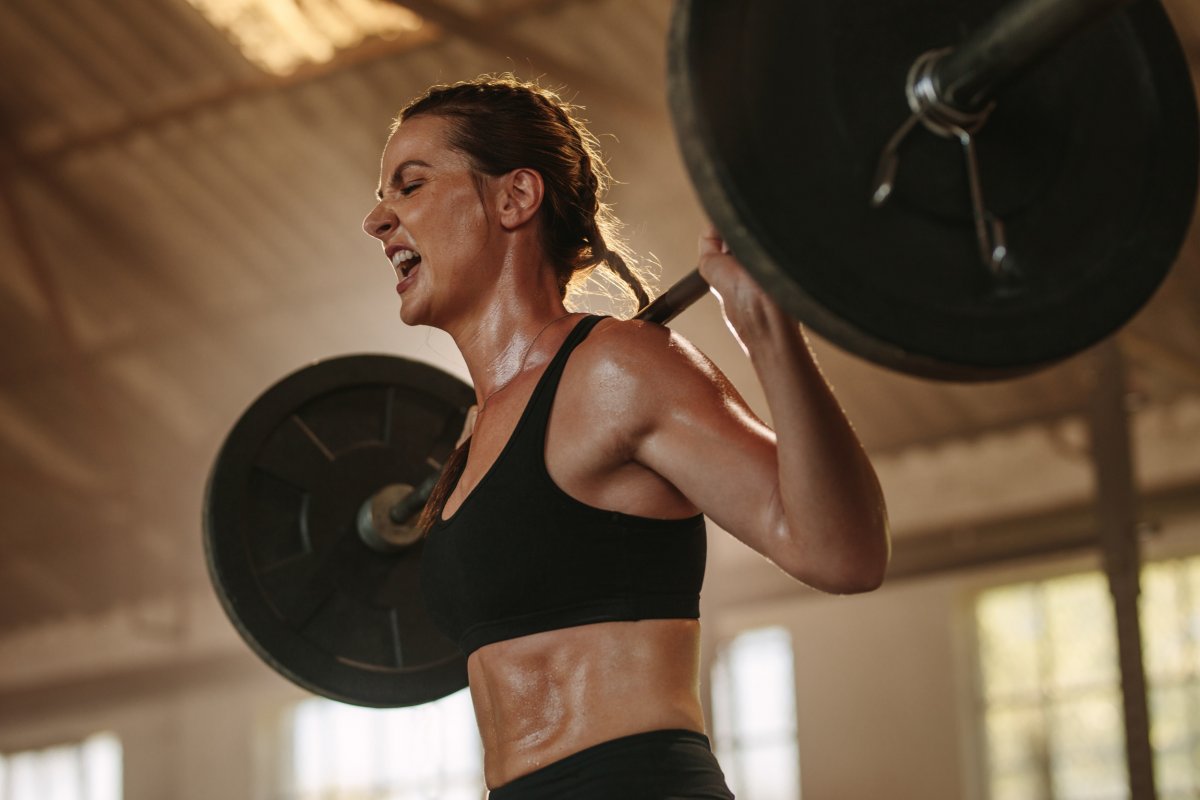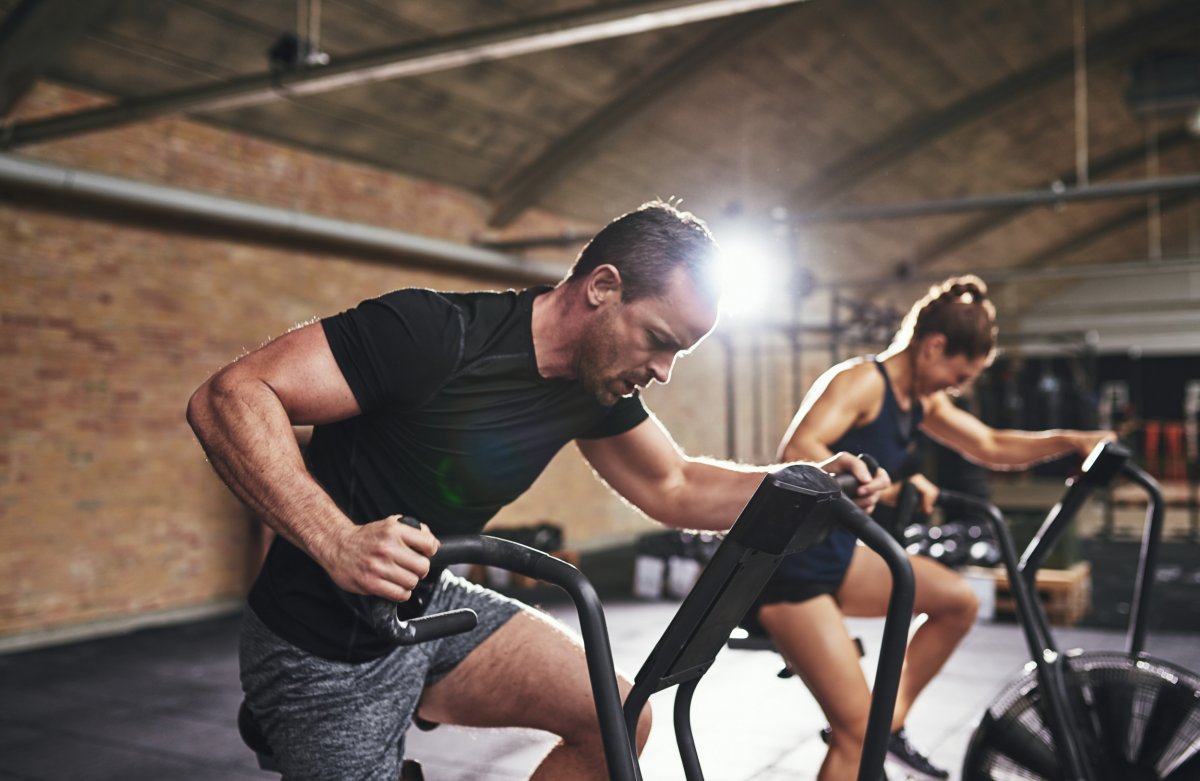Many athletes are often seen chilling in an ice bath as part of their post-training regimen. You may be wondering why anyone would willingly give themselves a cold shock at any point, let alone when you're completely tired out after a rigorous exercise routine.
Dr. Edward Laskowski, a professor of physical medicine, rehabilitation and orthopedics at the Mayo Clinic in Rochester, Minnesota and former co-director of Mayo Clinic Sports Medicine, told Newsweek: "In general, cold helps to aid recovery after an exercise session."
If sitting in an ice bath sounds too extreme, a quick cold blast in the shower may offer similar benefits. But how so?
Here, we unpack some of the benefits of taking a cold shower.
Why Cold Showers Are Good For Recovery and Repair
Laskowski said studies have shown that ice baths help to reduce inflammation, swelling and "delayed onset muscle soreness" following exercise.
Cold showers can be considered "a gentler and easier way" of getting many of the same benefits you'd get from an ice bath, he said.
Cools Your Body Faster
A cold shower can improve your post-exercise recovery by helping to cool the body faster, especially after working out in a hot environment, Laskowski said.
A 2019 study published in the Journal of Strength and Conditioning Research looking at the effects of a cold water shower (CWS) after 45 minutes of cycling in a hot environment indicated that "CWS can promote TCS [thermal comfort sensation] by facilitating a faster HR [heart rate] recovery after 30-minute post intervention compared with passive recovery.
"The cooling benefits of a CWS could be only recommended to reduce cardiac stress after routine workout in a hot environment," the study said.

Increases Blood Circulation
When you blast yourself with cold water, that shock puts your body into survival mode, the Cleveland Clinic explains, speeding up the delivery of freshly oxygenated, warm blood in your body.
It's the same reason for why ice is used for bruises or when you tear a muscle to reduce inflammation. When the temperature of a certain part of the body drops, the body sends more blood to that area to compensate and help bring the temperature back up, which speeds up your recovery, according to a Healthline article medically reviewed by Dr. Debra Rose Wilson, a professor, researcher and holistic healthcare practitioner.
The body increases blood flow to warm your core and protect vital organs and this ultimately stimulates overall blood circulation through the whole body, the Cleveland Clinic says.
So regular cold showers can essentially make your circulatory system more efficient, as it trains the body to work harder to maintain its core temperature.
Among those who may benefit from cold showers include people who suffer from poor circulation, high blood pressure and diabetes.
Laskowski noted that hot showers can also help increase blood circulation and could provide relief for those with cold or respiratory symptoms by easing nasal and chest congestion. "The increase in blood flow provided by heat can help relax and ease pain in muscles and also lessen joint pain in individuals with arthritis," he said.
How to Take a Cold Shower
Give your body a cold water blast at the end of your normal shower, gradually changing the water from hot to cold. Stay under the cold shower for about two to three minutes. Breathing deeply can help mentally reduce the level of discomfort you're feeling from the temperature switch.
The water temperature will need to drop to at least 60 degrees Fahrenheit, which is around 40 degrees lower than a typical hot shower, in order for the body to start reaping any potential benefits of a cold shower, exercise physiologist Zach Carter, who is a Certified Strength and Conditioning Specialist (CSCS) told the Cleveland Clinic.
Allow your body time to ease into the temperature change, the specialist advised. Even 30 seconds under a cold water stream can deliver some of the desired results. But the potential benefits of a cold shower begin to gradually diminish after around three minutes, he added.
Like any exercise, practice makes perfect. So you can start with a short blast of cold water and gradually build up to colder, longer sessions with each try.
Carter, however, has never recommended cold showers as a treatment option, warning that overall "it's just not a necessary situation to put your body in."

Other Benefits of Cold Showers
Better skin
The Mayo Clinic's Laskowski said: "Cold showers also do not dry out the more superficial skin layers, which hot water can, and consequently can help the skin maintain good hydration status."
Increased Metabolism
As your body goes into overdrive during a cold shower in response to the sudden shift in temperature, it also boosts your metabolism as it works hard to keep your body warm. This self-heating process burns calories, explains the Cleveland Clinic.
Dr. Geert Buijze, an orthopedic surgeon at Academic Medical Center, Universiteit van Amsterdam, Netherlands, told the Harvard Business Review: "Cold temperatures activate the brown—or good—fat in the body.
When brown fat is activated, it keeps the body warm by burning calories, he explained. "It may also increase your energy and metabolism and help control your blood sugar. That could reduce your risk of obesity and diabetes."
However, exercise physiologist Carter warned: "Cold showers are not going to be your best route to weight loss."

Combating Depression
Laskowski noted: "Some studies have also shown cold showers can also help to combat depression by decreasing cortisol and increasing energy by stimulating the sympathetic nervous system, which also can help improve focus."
For example, a 2008 study published in Medical Hypotheses suggested that cold hydrotherapy can "relieve depressive symptoms rather effectively." The therapy was also found to have a "significant analgesic [pain relieving] effect" and did not appear to have noticeable side effects or cause dependence.
The study explained: "Exposure to cold is known to activate the sympathetic nervous system and increase the blood level of beta-endorphin and noradrenaline and to increase synaptic release of noradrenaline in the brain as well.
"Additionally, due to the high density of cold receptors in the skin, a cold shower is expected to send an overwhelming amount of electrical impulses from peripheral nerve endings to the brain, which could result in an anti-depressive effect," the study said.
Boosts Immune System
Laskowski said recent research suggests cold water can also increase "beneficial immune responses" by increasing white blood cells, which help to fight infection.
According to a study of around 3,000 people co-authored by the aforementioned orthopaedic surgeon Buijze (published in 2016 in the peer-reviewed PLOS One journal), those who took a cold shower for at least 30 seconds for a month called in sick 29 percent less than those in the control group and "54 percent less if they also engaged in regular physical exercise," Buijze said.
On average, those who took the cold showers actually reported feeling sick just as many days as those who showered normally. However, either their symptoms were less severe or they felt more energetic, those who took cold showers were better able to push through the sickness and function despite it, the surgeon explained.
"Cold temperatures make you shiver—an autonomous response to keep your body temperature up. It involves a neuroendocrine effect and triggers our fight-or-flight response, causing hormones like cortisol to increase, shortly before we shift to a relaxation response," Buijze told the Harvard Business Review.

Uncommon Knowledge
Newsweek is committed to challenging conventional wisdom and finding connections in the search for common ground.
Newsweek is committed to challenging conventional wisdom and finding connections in the search for common ground.
About the writer
Soo Kim is a Newsweek reporter based in London, U.K. She covers various lifestyle stories, specializing in travel and health.
Soo ... Read more
To read how Newsweek uses AI as a newsroom tool, Click here.








